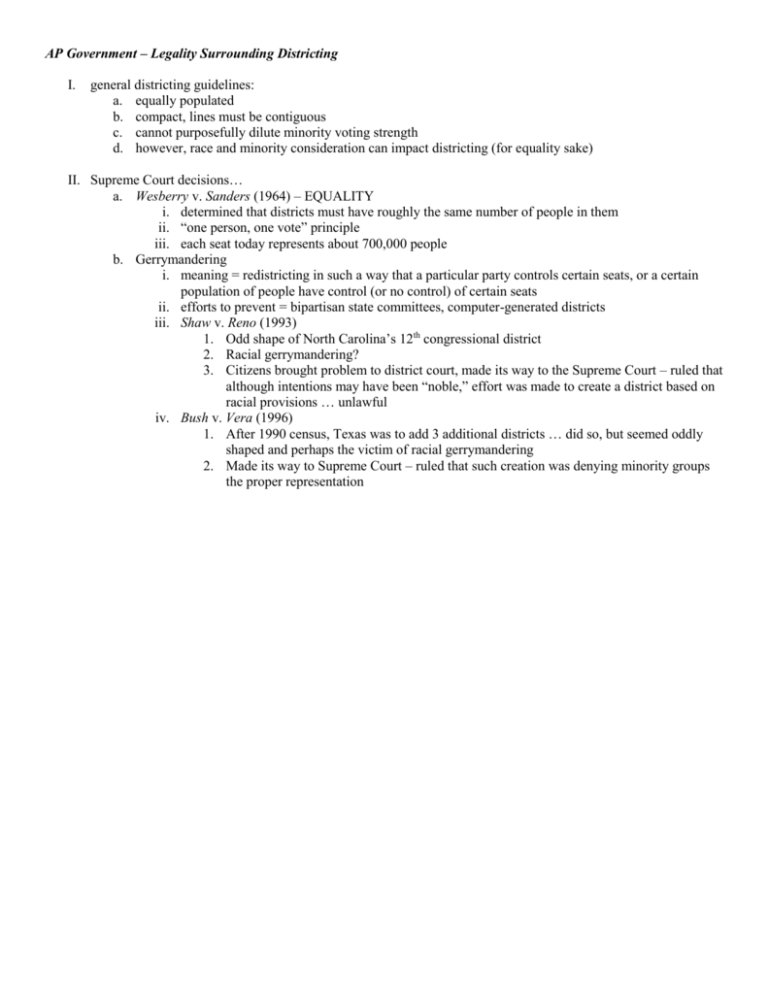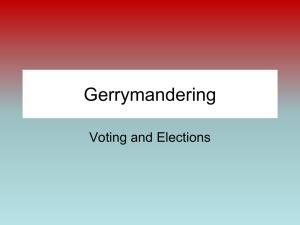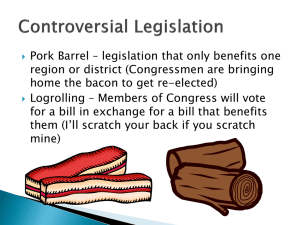NotesUnit5c
advertisement

AP Government – Legality Surrounding Districting I. general districting guidelines: a. equally populated b. compact, lines must be contiguous c. cannot purposefully dilute minority voting strength d. however, race and minority consideration can impact districting (for equality sake) II. Supreme Court decisions… a. Wesberry v. Sanders (1964) – EQUALITY i. determined that districts must have roughly the same number of people in them ii. “one person, one vote” principle iii. each seat today represents about 700,000 people b. Gerrymandering i. meaning = redistricting in such a way that a particular party controls certain seats, or a certain population of people have control (or no control) of certain seats ii. efforts to prevent = bipartisan state committees, computer-generated districts iii. Shaw v. Reno (1993) 1. Odd shape of North Carolina’s 12th congressional district 2. Racial gerrymandering? 3. Citizens brought problem to district court, made its way to the Supreme Court – ruled that although intentions may have been “noble,” effort was made to create a district based on racial provisions … unlawful iv. Bush v. Vera (1996) 1. After 1990 census, Texas was to add 3 additional districts … did so, but seemed oddly shaped and perhaps the victim of racial gerrymandering 2. Made its way to Supreme Court – ruled that such creation was denying minority groups the proper representation











